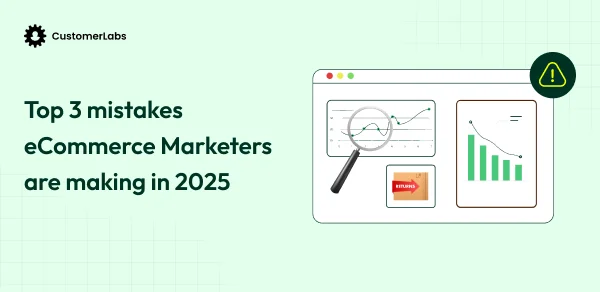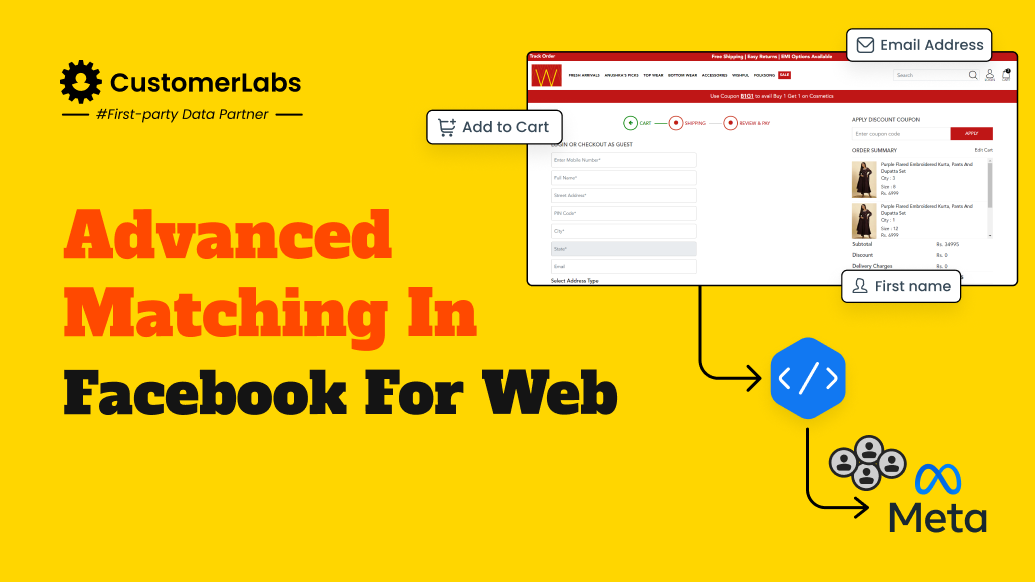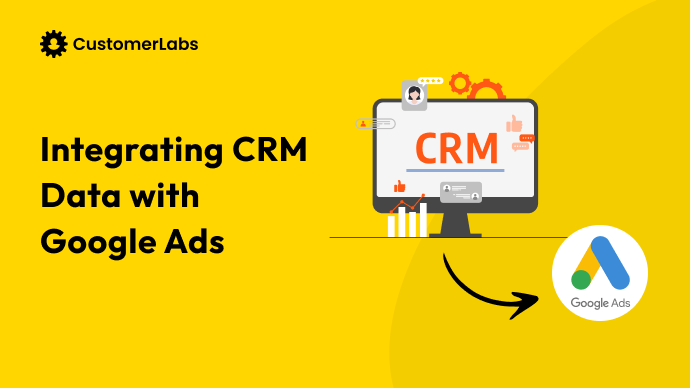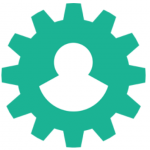Audience segmentation strategy is much needed to enhance personalization in your ad campaigns. But what powers this audience segmentation is the first-party data!
To give a bit of the context here –
1P data or the First-party data refers to information you collect directly from your audience through interactions such as website visits, app usage, and email subscriptions. Plus, your business data. This data is invaluable because it is highly accurate, collected with consent, and exclusive to your organization.
It is crucial for understanding your audience’s behaviors and preferences in a privacy-compliant manner, enabling you to craft precise and impactful messaging.
This data becomes particularly powerful when advertising on platforms like Facebook and Instagram (i.e., Meta). It helps you divide your audience into groups based on what they like, need, or do. This process is called audience segmentation—categorizing customers into groups based on behaviors, preferences, and demographics to target your ad spend more effectively.
In this blog, let’s explore how first-party data can boost your audience segmentation and, ultimately, make your Meta Ads work better for you.
Why First-Party Data is a Game-Changer for Meta Ads
Put simply, first-party data allows you to create ads that speak directly to your audience’s needs. You’re not guessing what they might like; you know what they have interacted with. This means your ads can be incredibly relevant and engaging.
And in the ever-evolving Ad ecosystem, especially after the iOS 14 update, 1st party data has become like the need for Meta Ads algorithms. That we’ve already spoken in all our previous blogs. Here, today, we’re gonna focus on why or how first-party data is a game-changer for Meta Ads.
Here are three key reasons why first-party data is a critical part of effective Meta ads.
Ensures privacy compliance
A huge advantage of using first-party data is how it helps you stick to privacy rules like the GDPR in Europe and the CCPA in California. These laws are strict about how you can use customer data.
By using data you collected yourself, with permission, you’re on solid ground. You can show your customers that you respect their privacy and are committed to protecting their information. This not only builds trust but ensures your campaigns are legal.
Cuts advertising costs
Using first-party data smartly can also cut down on how much you spend on ads. Since you know more about your audience, you can train the AI-driven ad algorithms better to target your ads better.
This is possible because, with high-quality first party data, you’ll have the complete customer journey, and therefore, can easily segment your audience according to their behavior.
This means you’re not wasting money showing ads to people who probably won’t be interested or maybe interested only in a particular service or a product. Better targeting leads to less spending on the wrong audience and more on those likely to buy, boosting your return on ad spend (ROAS).
Wanna implement the 1PD Ops strategy? Get in touch with our expert team – Book a Demo
Improves personalization
Finally, first-party data lets you personalize your ads and marketing campaigns like never before. You can tailor messages based on what you know your customers like or have done in the past.
Personalization no more means “Hey {{First_name}}”. Those days are long gone. Now, personalization means understanding what the user wants and ensuring to give (show) them that particular product or service.
For instance, if someone bought a tent from your website, you can segment them and target them with ads for sleeping bags or hiking gear. Personalized ads feel more relevant to the prospect, which increases the chances they’ll engage with your ad and eventually make a purchase.
Long story short, using first-party data effectively allows you to comply with privacy laws and refine your advertising efforts to be more cost-efficient and personalized, making your Meta ads much more effective.
But how do you actually make all of this happen? What’s the right strategy to collect & leverage this high-quality 1P data?
4 Tips to Leverage First-Party Data to Enhance Audience Segmentation for Meta Ads
Here are four tips to enhance your audience segmentation by leveraging first-party data.
Centralize data
Start by bringing all your first-party data into one place. Whether from your CRM, website analytics, social media interactions, or email campaigns or even an offline store. Having a centralized data management system gives you a comprehensive view of your customers.
This unified approach streamlines data analysis and ensures consistency across different advertising campaigns. Use 1PD Ops platform such as CustomerLabs to integrate and manage data effectively. This setup will serve as the foundation for all your segmentation and targeting strategies.
However, if your business is new, or low on traffic, along with the ad campaigns, focussing on SEO to start collecting 1P data helps.
Focus on boosting organic traffic to your owned channels, particularly your website, by perhaps partnering with a SaaS SEO agency such as growfusely, or Gushwork. After all, more organic traffic means more user interactions, from which you can collect valuable first-party data.
Though 98% of people who land through SEO on your website are anonymous, you can retarget them on the ad campaigns, and activate them. Thus, boosting your organic efforts too.
Leverage behavioral insights
Dive deep into the behaviors exhibited by your customers. Analyze actions such as page views, purchase history, cart abandonments, and social engagement to understand their preferences and pain points. Utilize advanced first-party data ops tools like CustomerLabs to identify patterns and trends.
For example, if you notice that customers who watch a product video are more likely to make a purchase, you can create a segment specifically for targeting video viewers with more personalized ads. This approach enhances the relevance of your ads and increases the likelihood of conversion.
Creating dynamic audience segments
Move beyond static segments to dynamic segmentation, where audience groups are automatically updated based on real-time data.
This means someone who just made a purchase could be moved from a ‘prospect’ segment to an ‘existing customer’ segment in real-time, ensuring they receive the most relevant marketing messages or maybe exclude from the existing campaigns across all other marketing channels so that the ad is not shown to them again. This is nothing but Omnichannel Activation.
Dynamic segmentation helps maintain the accuracy of your targeting and increases the agility of your marketing efforts across multiple channels.
Build lookalike audiences
Once you have your segments refined and performing well, use them to build lookalike audiences. This powerful feature available in Meta Ads allows you to reach new people who share similar characteristics with your best existing customers.
Provide Meta with a source audience, and it will apply machine learning to find new users who have similar behaviors, interests, and demographics. This method is particularly effective for scaling your campaigns while maintaining a high level of targeting precision for various lookalike audience segments.
Know more about how value based lookalike can help
Meta Advanced Conversions API
Powering the ad platforms with high-quality first party data signals is without doubt the most needed thing. However, for this to happen, server-side connection is essential. Meta’s Advanced Conversions API or the advanced CAPI helps train the ad algorithms with the right high-intent signals by syncing the 1P data signals to ad platform. Therefore, having a robust Conversions API connection is mandatory.
Wondering if your CAPI connection is rightly setup and if you are leveraging it fully? Get a free CAPI audit from our 1PD Ops experts.
So to conclude….
Using first-party data to segment your audience means you can send messages that hit the mark every time, making your ads more effective and boosting your ROAS.
The Nucleus Audience Builder by CustomerLabs allows you to create hyper-personalized audience segments using first-party data (1p data). It integrates data across your marketing and CRM tech stack to offer a complete view of customer interactions and behaviors.You can create rich lookalikes of your high-value owned media audiences by pushing them to ad platforms.
The 1PD Ops platform helps you to activate first-party data by creating targeted segments on various ad platforms for personalized campaigns, enhancing engagement and conversion rates. It is privacy compliant with key regulations like GDPR and CCPA when managing your data. It also includes features for creating dynamic segments based on user actions, such as cart behavior or page visits, optimizing your ad performance to its fullest potential.
Sign up for a free trial today to unlock the power of your first-party data.







